Antelopes
Gorongosa’s antelopes are some of the most beautiful animals on Earth: sleek, powerful bodies often adorned with curved or spiraling horns that are some of nature’s most artistic creations. Gorongosa is famous for its large population of antelopes and the wide range of antelope species it supports. For this reason, Gorongosa is often called the ‘Serengeti of the South’. The vast floodplain around Lake Urema reminds many people of the plains of East Africa. But instead of herds of wildebeest, we have herds of waterbuck!
Gorongosa is also famous for its sable antelope. These magnificent animals really are the super-models of the antelope world! Their long, curved horns are gorgeous and their sleek coats add to their majestic appearance. Difficult to see in many other parks, sable are plentiful here in Gorongosa and fairly easy to view and photograph.
A whole other cast of antelope characters can be seen on your Mozambique safari along Gorongosa’s game drive roads, in the woodlands and thickets. Unlike the big herds of waterbuck and sable, many of these antelope species often live alone or in pairs, nimbly picking their way through the dense bush, always watching and listening for lions waiting in ambush…
Sable
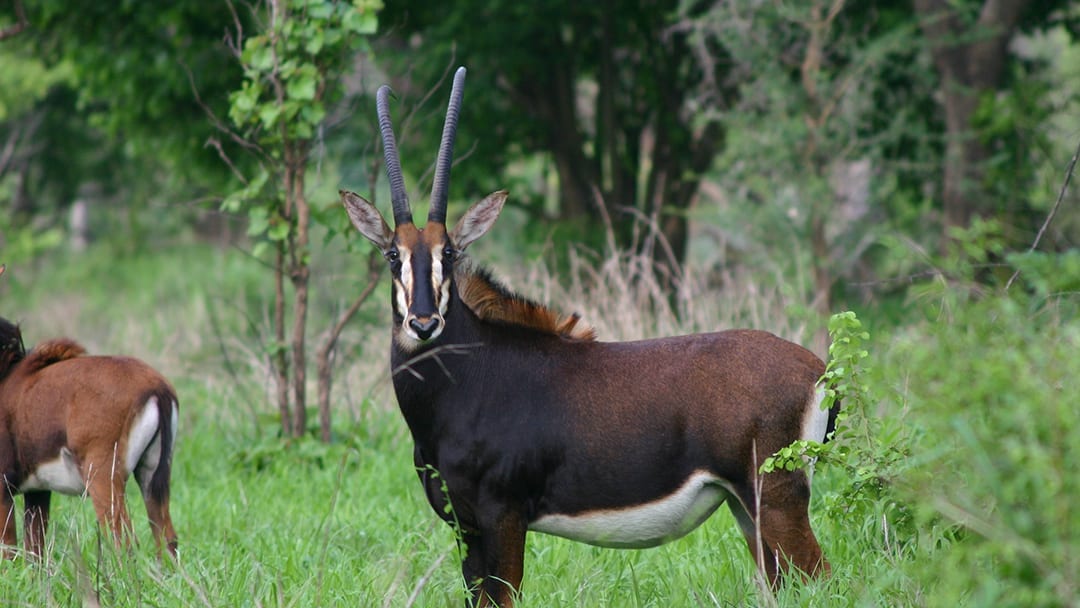
Arguably the most striking antelope in Gorongosa, the sable is instantly recognizable by its beautiful coat, horse-like mane, and long, elegantly curved horns. Males are shiny black, with a white belly and white facial markings. Females and younger males are usually reddish brown. Sables are not just the beauties of Gorongosa, they are also a great success story. While sable populations are dangerously low in many other parts of Africa, Gorongosa’s sable population is thriving and you have a good chance of seeing one on your visit.
You can find Gorongosa’s sables grazing on the tall grass among trees, or even on the side of the road as you enter from the main gate! When you encounter a group of sable, look carefully and you’ll see that the bull with his harem of females is not the leader in the herd. The leader is always a strong female and the old bull follows her.
Gorongosa’s waterbuck have become the kingpin of the Urema floodplain. With so much food and little competition, the waterbuck population has exploded and they can be seen in vast herds across the floodplain. It’s a sight not to miss! Waterbucks are robust, grey-brown antelopes with a signature white “bulls-eye” on their rump. As their name suggests, waterbuck always graze close to water and may even run into the water when chased by a lion. If encountered by a predator, they will defend themselves ferociously with their hooves and powerful horns.
Waterbuck
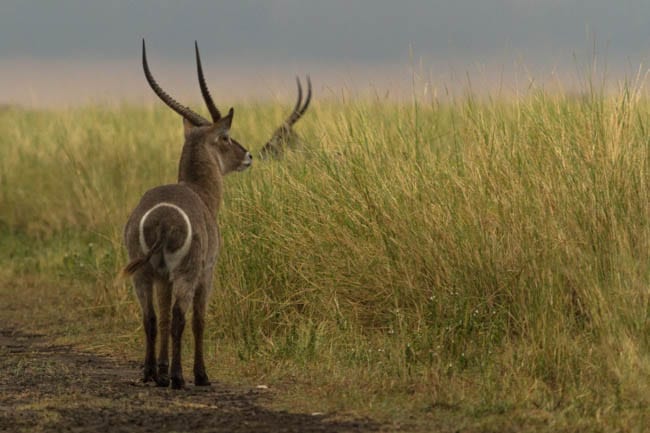
Greater kudu
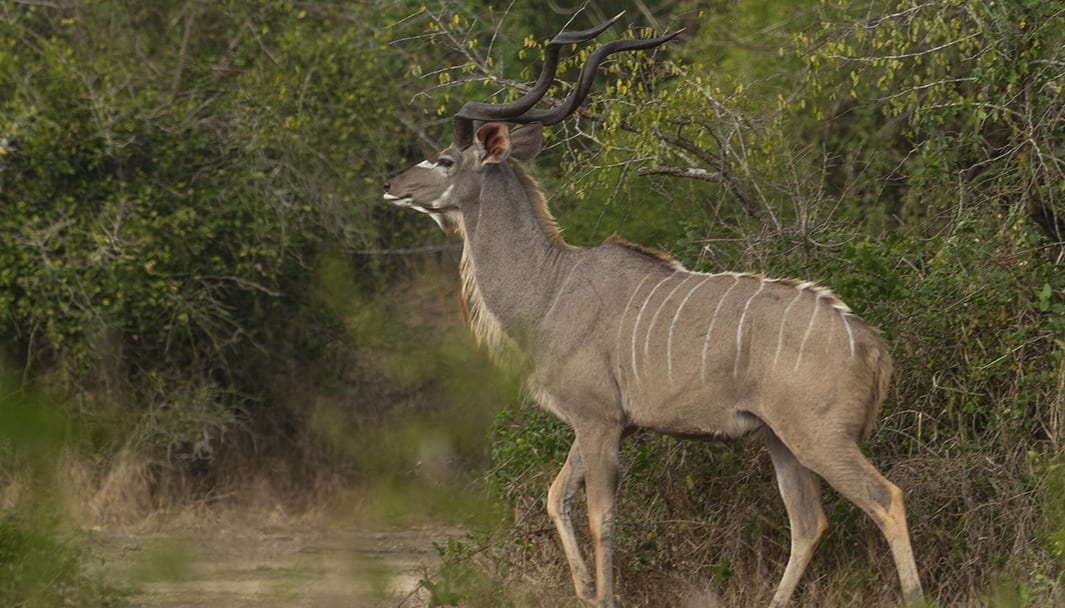
The kudu is one of the most magnificent large antelopes of Gorongosa. The male’s spiral horns tower overhead and their thick manes give them a strong and stately appearance. The females are an elegant sandy-brown with white stripes and both have oversized ears that can twist in almost any direction, giving them exceptionally good hearing. That barking sound you hear as you approach is no dog, it’s the kudu warning other animals that danger is near. Predators don’t dare mess with a male kudu but females and calves may not be so lucky. If impalas are the acrobatics of Gorongosa, kudus are the high jumpers. They can easily clear obstacles 2.5 m high when running away from danger. The best places to spot kudus are among trees in wooded savanna during early morning or later in the afternoon as they feed on leaves. Male kudus can fight fiercely to win a female, and their duels occasionally end in death of both rivals after their horns become permanently interlocked.
Nyala

If you see a male and a female nyala side-by-side, you’ll be amazed that they are the same species! The females look a lot like a kudu with a sandy coat and white stripes but they are much smaller. The males are dark chestnut brown, with a long, dark mane that stretches from under the chin to between the hind legs, and have distinctive orange legs. The shy nyala can be found near watering holes or browsing on leaves in the forest. You might even see one standing on its hind legs to eat hard to reach leaves, or stripping bark off young trees.
Lichtenstein’s Hartebeest
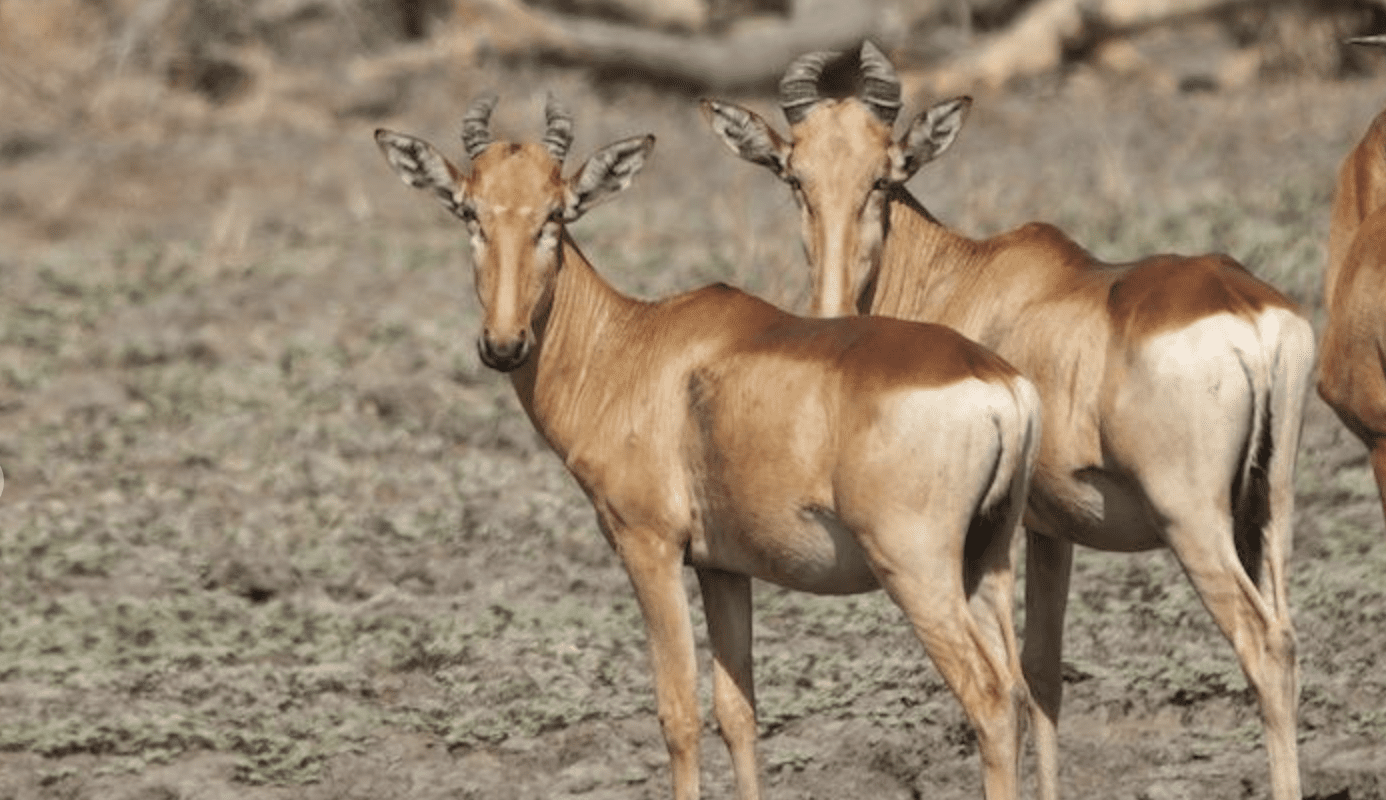
One antelope that you’ll never misidentify is the Lichtenstein’s hartebeest. Both males and females have bizarre “Z-shaped” horns, a reddish-brown coat, sloping back, horse-like tail, and a long, narrow head. Hartebeests are grazers that may follow wildebeest and zebra around to take advantage of the short lawn they create. The strong bull in each herd will defend his harem of females from other males. If you’re lucky enough, you might just see this ritualized fight. Instead of clashing horns while standing, they drop to their knees, interlock their horns, and try to twist each other’s head to the ground.
Eland
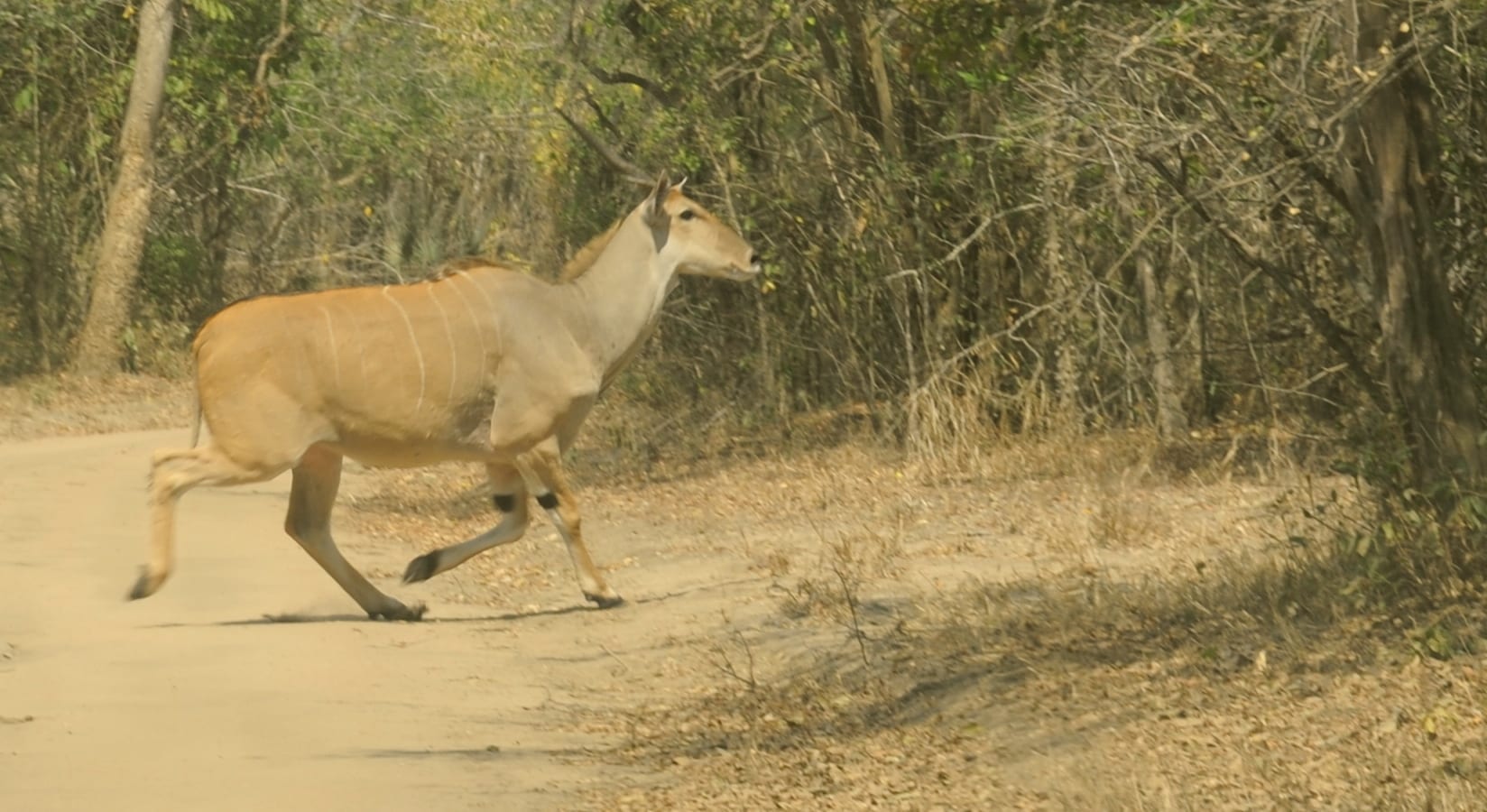
Despite being the largest antelope in Africa (twice the weight of a kudu), this cow-sized animal is surprisingly difficult to spot. They are shy and take flight the moment they see an approaching vehicle. Like the kudu, they have sandy-brown coats with thin white stripes but both males and females have manes and straight horns that are only twisted at the base. Old bulls grow a patch of long, dark hair on the forehead. Elands mostly browse on leaves, but may graze grass and dig for bulbs and roots with their hoofs.
Blue wildebeest
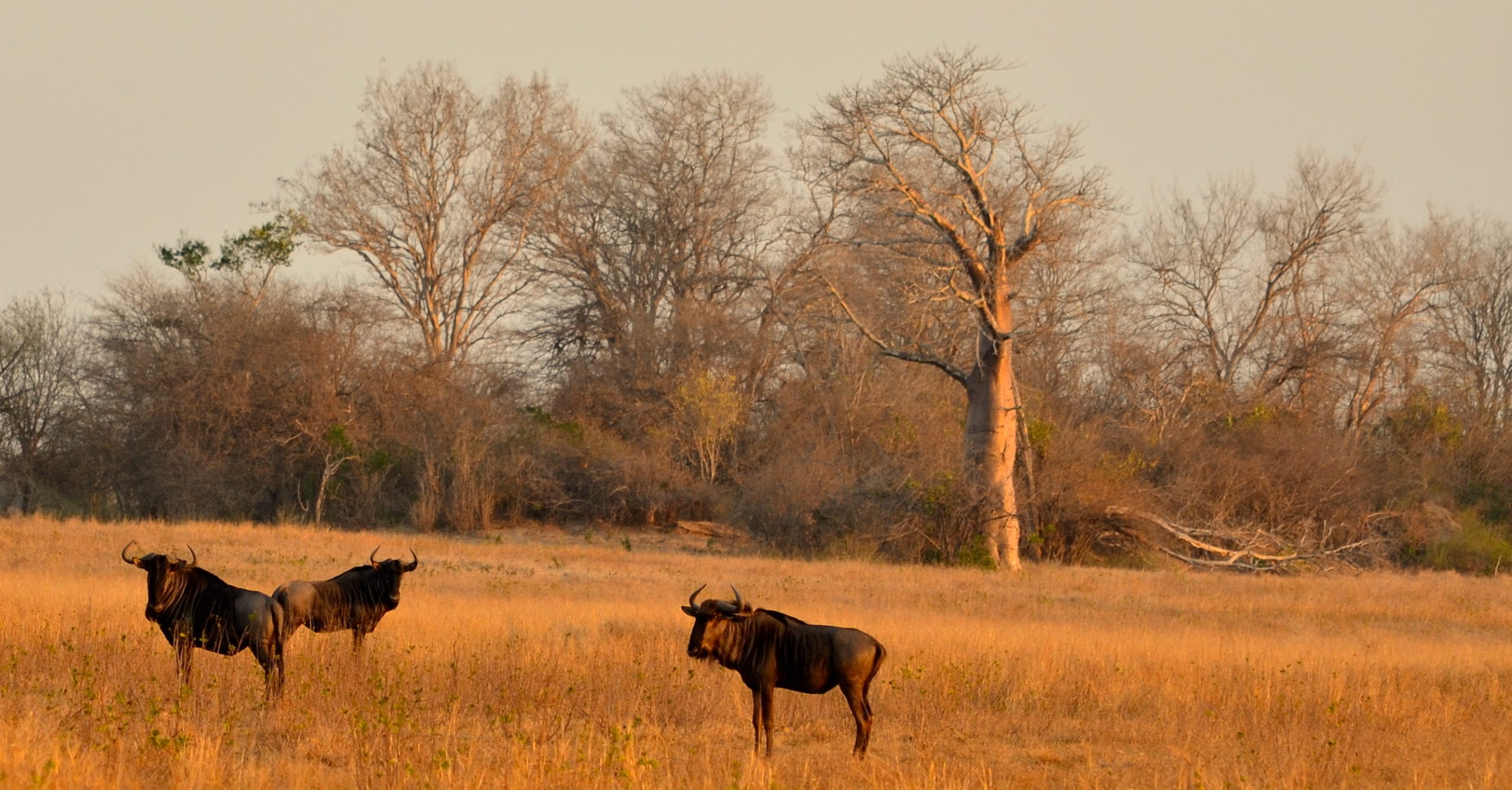
Gorongosa’s wildebeest can be seen roaming the open plains, grazing on the productive grasses of the Urema valley, never wandering too far from water. In 2007, 180 wildebeest were relocated to Gorongosa’s fenced sanctuary to give the Park’s population a boost. After years of successful breeding, their population increased to the point where some of them were released into the general park area for visitors to see. You may spot the wildebeest’s ungainly silhouette on the horizon and instantly recognize its shape. Its head is proportionately larger than it’s sloped body, and its short, curved horns pierce the sky. As you get closer, you can see that its coat is dark grey to brownish-grey, and there is a shaggy black mane under its chin and across its neck and shoulders. Notice how it grazes on the plains – it follows behind other antelopes and chooses the shortest, most productive grasses to eat. Its teeth and muzzle are specially designed to crop short grass to pack the most nutrition into every bite.
Impalas are a common sight on the savannas of Gorongosa – just look for their distinct white and black tail and black “M-shaped” marking on their rump. Impalas are one of the more entertaining antelopes to watch as they perform graceful, energetic leaps like acrobats. You may wonder why the impala does these displays for seemingly no reason. It’s not clearly understood, but it may be a display of their strength and speed to discourage predators from trying to capture them. The best time to see impalas is when they graze early in the morning or in the late afternoon as they can get much-needed water from the dewy grass and avoid the afternoon heat. You’ll notice that impalas are incredibly social and if you look closely, you can see that there are two different kinds of herds: large, strong males with their harem of females, and younger, weaker males band together to form bachelor groups.
Impala
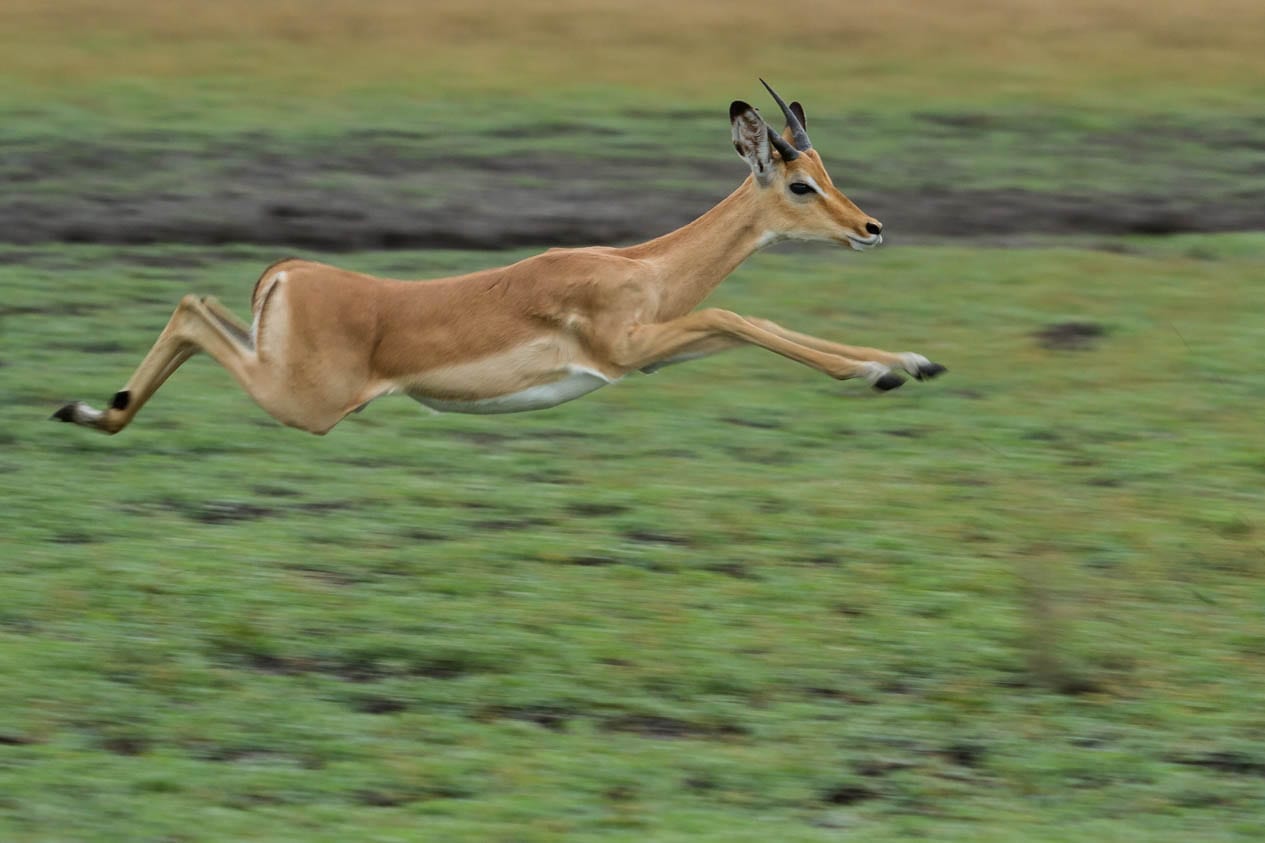
Bushbuck
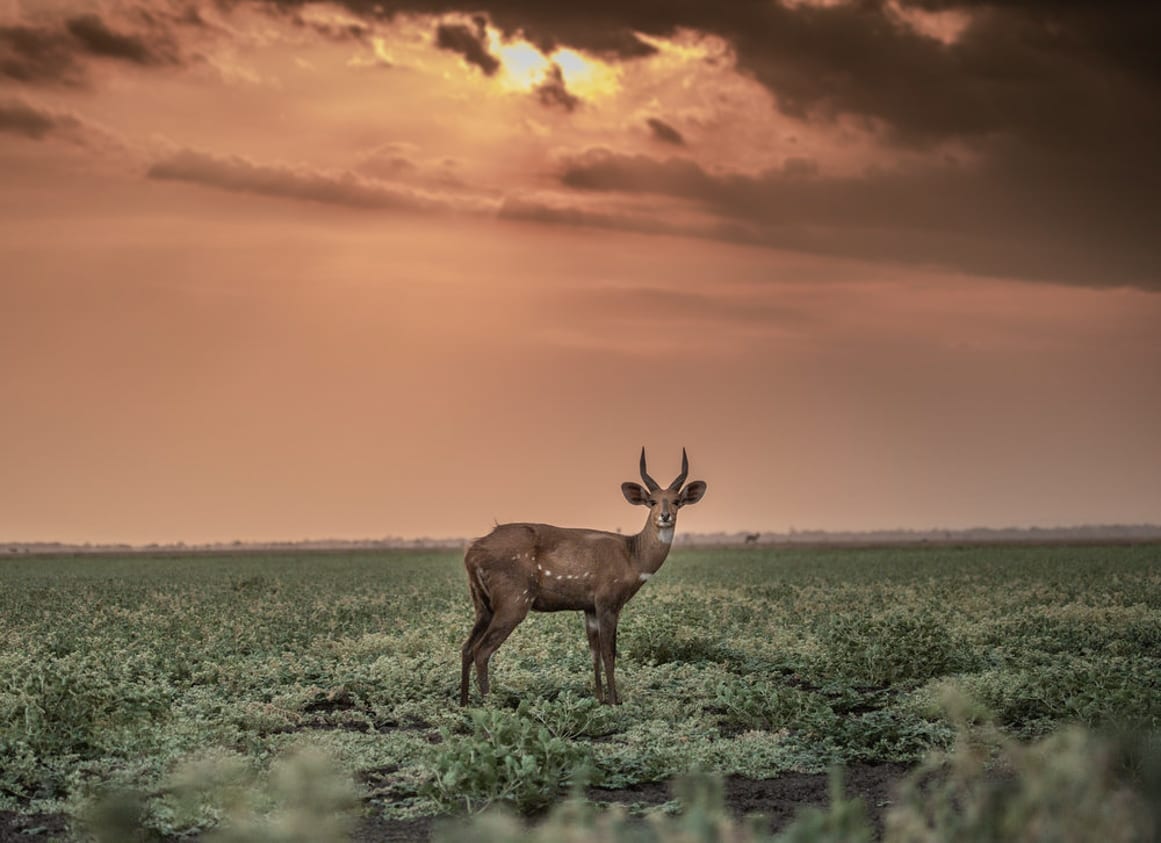
Unlike impalas, bushbucks are solitary animals that rarely form groups. The bushbuck’s gorgeous chestnut coat is adorned with white spots and stripes on the back legs, and a white stripe on the chest. Bushbucks are territorial and you can always find them faithfully protecting their favorite sites. You have the best chance of seeing bushbucks early in the morning near water, or later if the sky is overcast. Bushbucks are browsers that feed mostly on leaves, buds and fruits of low bushes and trees. You may even see one licking the ground to get minerals and salt from the nutrient-rich soil.
Reedbuck
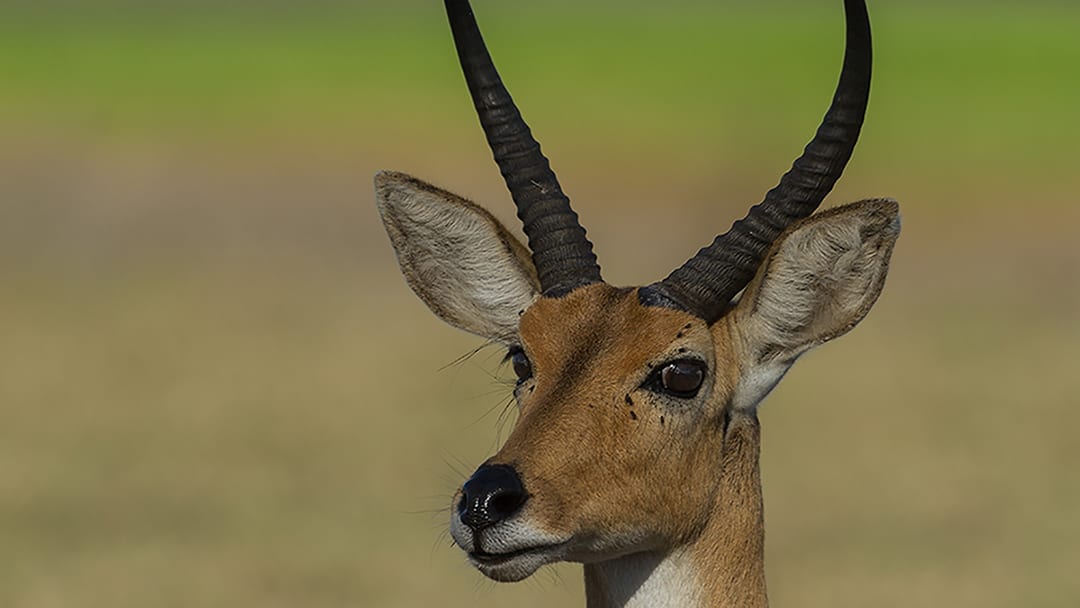
Reedbucks are the elegant, shy beauties of Gorongosa. They are a pale golden color with a thick, bushy tail and a distinctive black spot below each ear, and the males have forward-pointing horns. Reedbucks get their name because they have to stay close to water at all times and often hide in reed-beds. If you’re not watching closely, you’ll miss them hiding the reeds and tall grasses. If they sense danger coming, instead of running away they often lie down in the reeds. If you close your eyes and listen carefully, you may hear a long whistling sound. That is a territorial male telling other males to back-off, otherwise they’ll be met with a sparring match.
Oribi
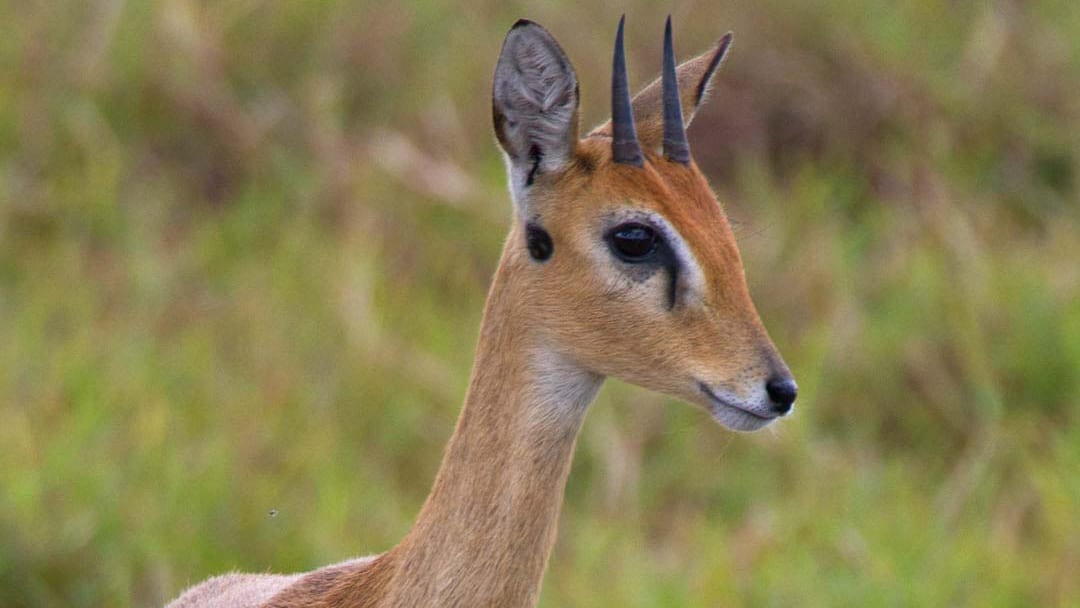
A Gorongosa resident that you’ll surely get to know on your game drives is the petite, graceful oribi. The oribi is a rare sight in most parts of Africa but in Gorongosa, our oribis are thriving and you’ll be thankful for it – they’re a delight to watch! You can tell an oribi apart from other antelopes by its short, black tail and dark glands in front of its eyes, which are used by males to mark their territories. If you approach an oribi and they get spooked, they will usually run for a few seconds and then stop to look back, unlike impalas that just keep running. There’s a great photo opportunity for you to snap a shot of one of Gorongosa’s tiniest antelopes.
Duiker
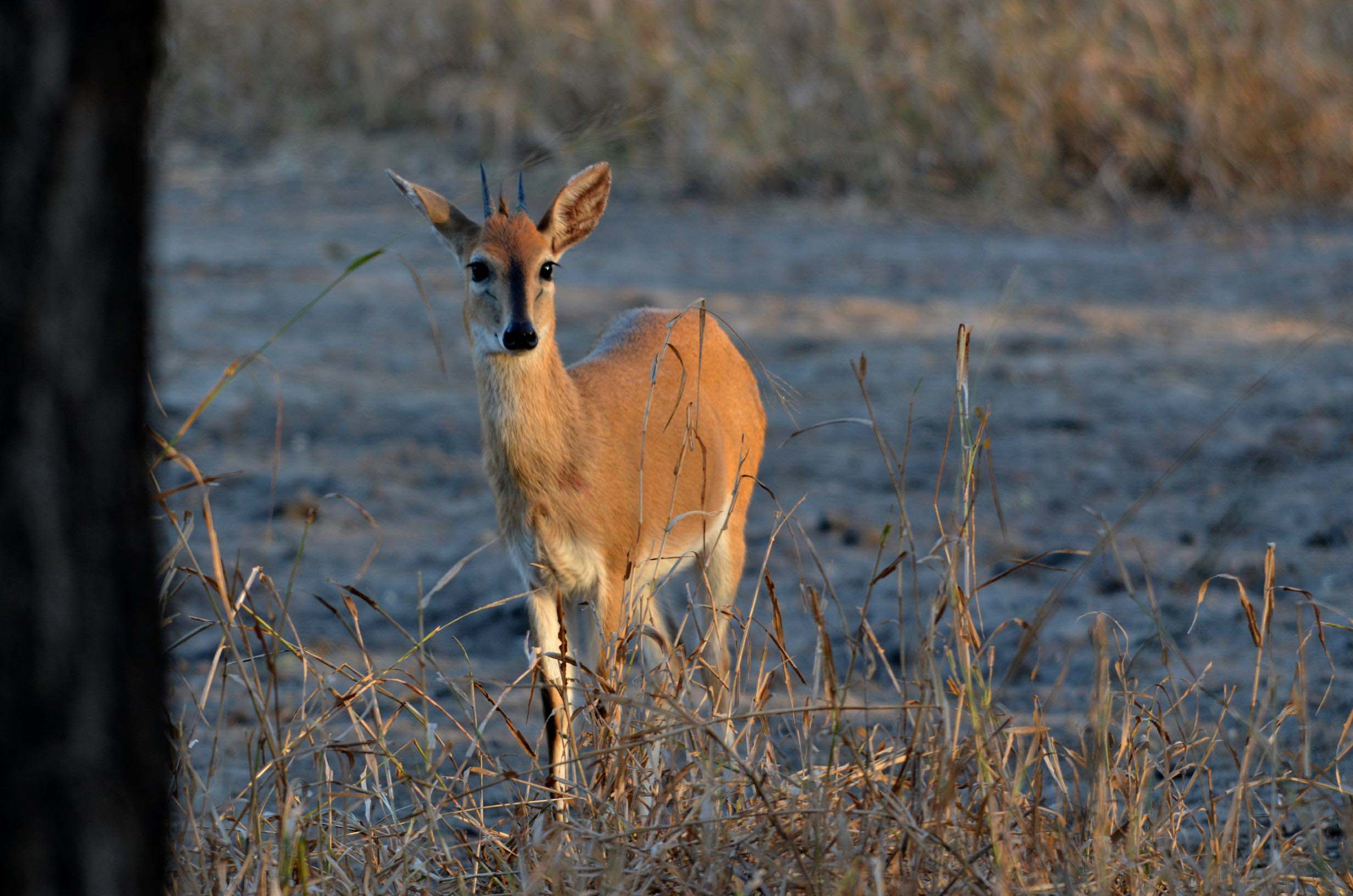
You will have to have a keen eye to spot a duiker in Gorongosa, as they are some of the smallest and most elusive antelopes. They’re only about the size of a large dog. The two duiker species that you can find in Gorongosa are the common duiker and the red duiker. Your best chance of seeing a duiker is very early in the morning in dense vegetation or near water. Duikers need to eat protein along with their plant diet, and they’ve been known to eat insects, frogs, snakes, bird eggs and chicks, and even carrion
Our Mission
Our Mission
Advance an integrated multi-partner approach to conservation and to people-centred development. The Gorongosa Project protects the Park’s biodiversity and ecosystem services and unlocks its economic potential for the community inhabitants of the Gorongosa Buffer Zone, Sofala Province, Mozambique and further afield.
Our Vision
A thriving, biodiversity-rich, Greater Gorongosa conservation landscape, which supports Sofala Province as an engine for resilient and sustainable development enabling nature experiences and wellbeing for its people, enriching all of Mozambique and the world.
A Park for Peace
On 1 August, 2019 a historic ceremony was held in Gorongosa to celebrate the Cessation of Hostilities Accord between the leaders of the Government of Mozambique and the opposition Renamo Party. The accord established Gorongosa National Park (GNP) as a ‘Park for Peace’, delivering human development to the communities that share the greater landscape.